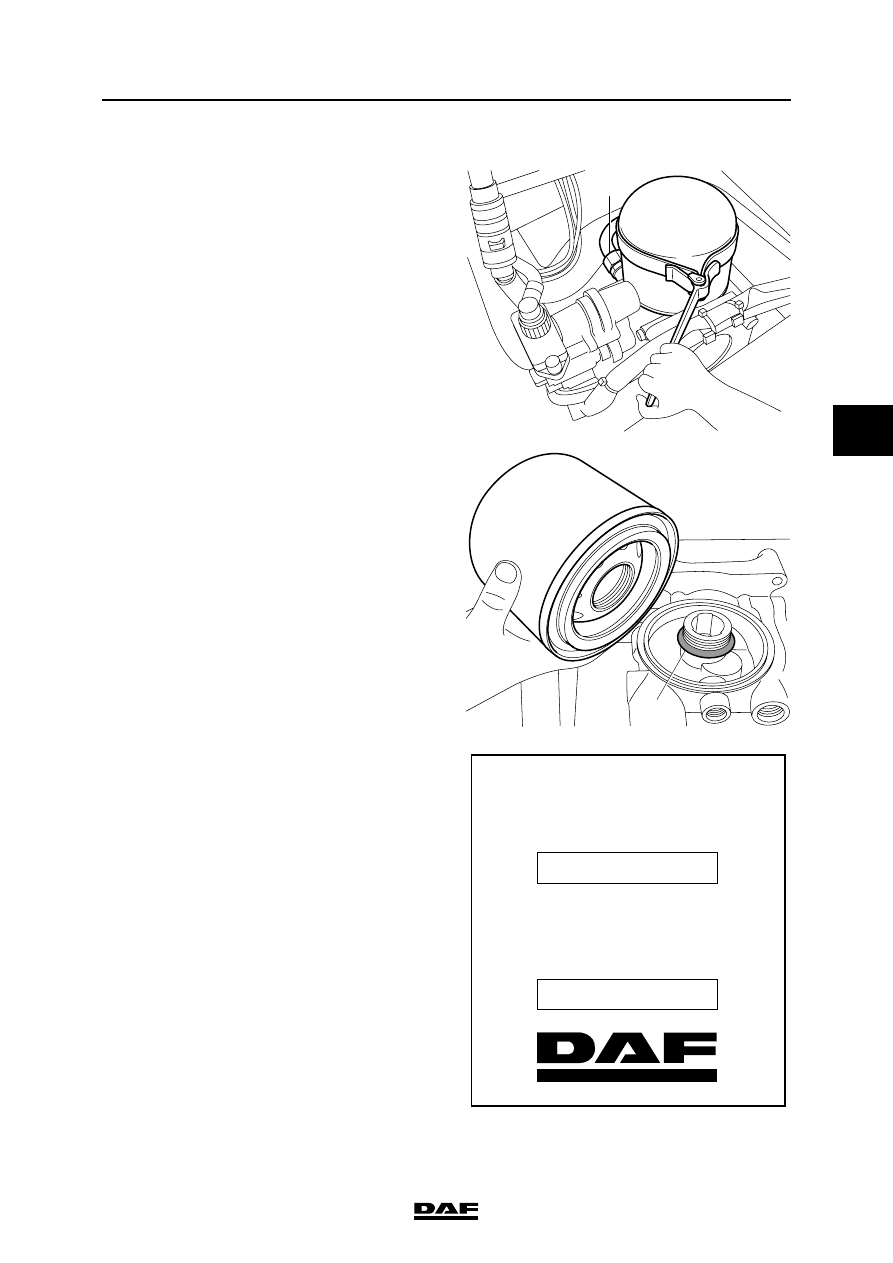DAF LF45, LF55 Series. Manual - part 464

©
200436
3-7
Removal and installation
BRAKE SYSTEM AND COMPONENTS
ΛΦ45/55 series
6
4
Removing air dryer filter element
1.
Bleed the air dryer by allowing it to
regenerate or by loosening the compressor
pipe (1), so that the interior of the air dryer is
depressurised.
2.
Remove the filter element by turning it anti-
clockwise using a filter strap spanner.
3.
The filter element should be disposed of as if
it were an oil filter.
4.
Clean the air dryer internally.
5.
Check the air dryer threaded connection (2)
for damage and then lubricate it sparingly
with grease.
Installing the air dryer filter element
1.
Lubricate the sealing ring of the new filter
element sparingly with grease.
2.
Fit the filter element by manually tightening it
until the sealing ring abuts. Then tighten the
filter element by hand (approx. 1 turn).
3.
Fasten the compressor line (1).
4.
Pressurise the system and then check the air
dryer for air leaks.
5.
Fill in the date on the sticker with a
waterproof felt pen by which the filter
element must be replaced (max. 1 year after
fitting).
R600525
1
R600526
2
Artikelnummer
Reference
Teilenummer
Référence
Eerstvolgende vervanging
Next change
Nächster Wechsel
Prochain remplacement
1391510
R600523